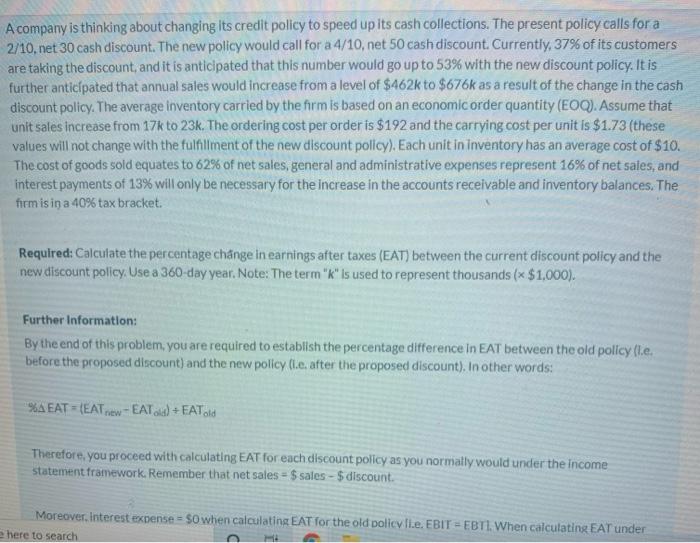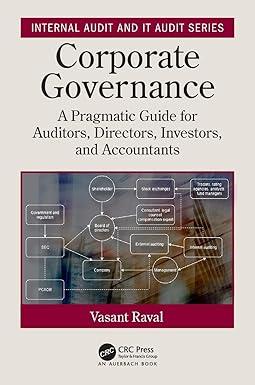I posted the question seceral times since yesterday please i need the right answer due tonight!!

A company is thinking about changing its credit policy to speed up its cash collections. The present policy calls for a 2/10, net 30 cash discount. The new policy would call for a 4/10, net 50 cash discount. Currently, 37% of its customers are taking the discount, and it is anticipated that this number would go up to 53% with the new discount policy. It is further anticipated that annual sales would increase from a level of $462k to $676k as a result of the change in the cash discount policy. The average inventory carried by the firm is based on an economic order quantity (EOQ). Assume that unit sales increase from 17k to 236. The ordering cost per order is $192 and the carrying cost per unit is $1.73 (these values will not change with the fulfillment of the new discount policy). Each unit in inventory has an average cost of $10. The cost of goods sold equates to 62% of net sales, general and administrative expenses represent 16% of net sales, and interest payments of 13% will only be necessary for the increase in the accounts receivable and inventory balances. The firm is in a 40% tax bracket Required: Calculate the percentage change in earnings after taxes (EAT) between the current discount policy and the new discount policy. Use a 360-day year. Note: The term "K" is used to represent thousands (x $1,000). Further information: By the end of this problem, you are required to establish the percentage difference in EAT between the old policy (.e. before the proposed discount) and the new policy (.e. after the proposed discount). In other words: %EAT =(EAT-EAT ad + EAToid Therefore, you proceed with calculating EAT for each discount policy as you normally would under the income statement framework. Remember that net sales = $ sales - $discount. Moreover. Interest expense = So when calculating EAT for the old policy ll.e.EBIT = EBT1. When calculating EAT under here to search Further Information: By the end of this problem, you are required to establish the percentage difference in EAT between the old policy (ie. before the proposed discount) and the new policy (e. after the proposed discount. In other words: %A EAT = (EAT W - EAT id) + EATold Therefore, you proceed with calculating EAT for each discount policy as you normally would under the income statement framework. Remember that net sales - $ sales - $ discount. Moreover.interest expense = $0 when calculating EAT for the old policyl.e. EBIT - EBT). When calculating EAT under the new policy: $ int. exp. - (increase in accrec + increase in inv.) x interest %. The difference in receivables acc.rec. after the proposed discount -acc.rec. before the proposed discount. This means that for each discount policy, you must multiply the avg collection period X avg dally net sales. Similarly, the difference in inventory = $ inv. after the proposed discount - Sin, before the proposed discount. Accordingly, you must divide EOQ 2 then multiply the outcome the $ avg inventory cost per unit for both discount policy frameworks 6 (ROUND YOUR ANSWER TO 2 DECIMAL PLACES. FOR EXAMPLE 17.23) be here to search









